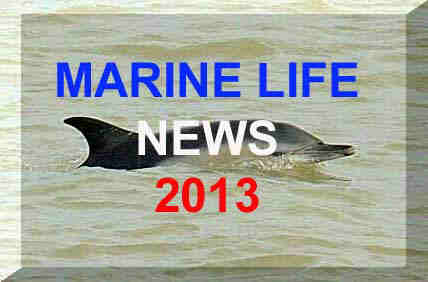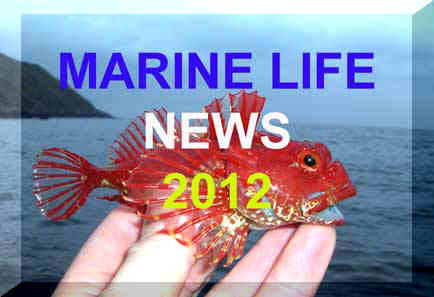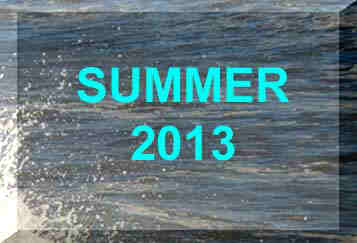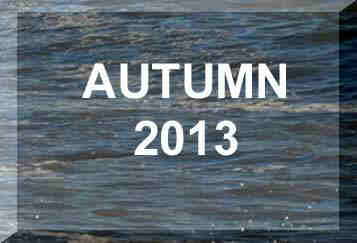LATEST
NEWS:
19
June 2013
The
Bearded
Seal, Erignathus
barbatus, was still showing off at Yell
in the Shetland Isles.
Earlier
Report
16
June 2013
A
young starving two metres long Minke Whale,
Balaenoptera
acutorostrata,
was washed up alive
at Gorleston, Norfolk,
and was too badly ill and had to be euthanised.
BMLSS
Cetaceans
8 June
2013
Adur World Oceans
Day
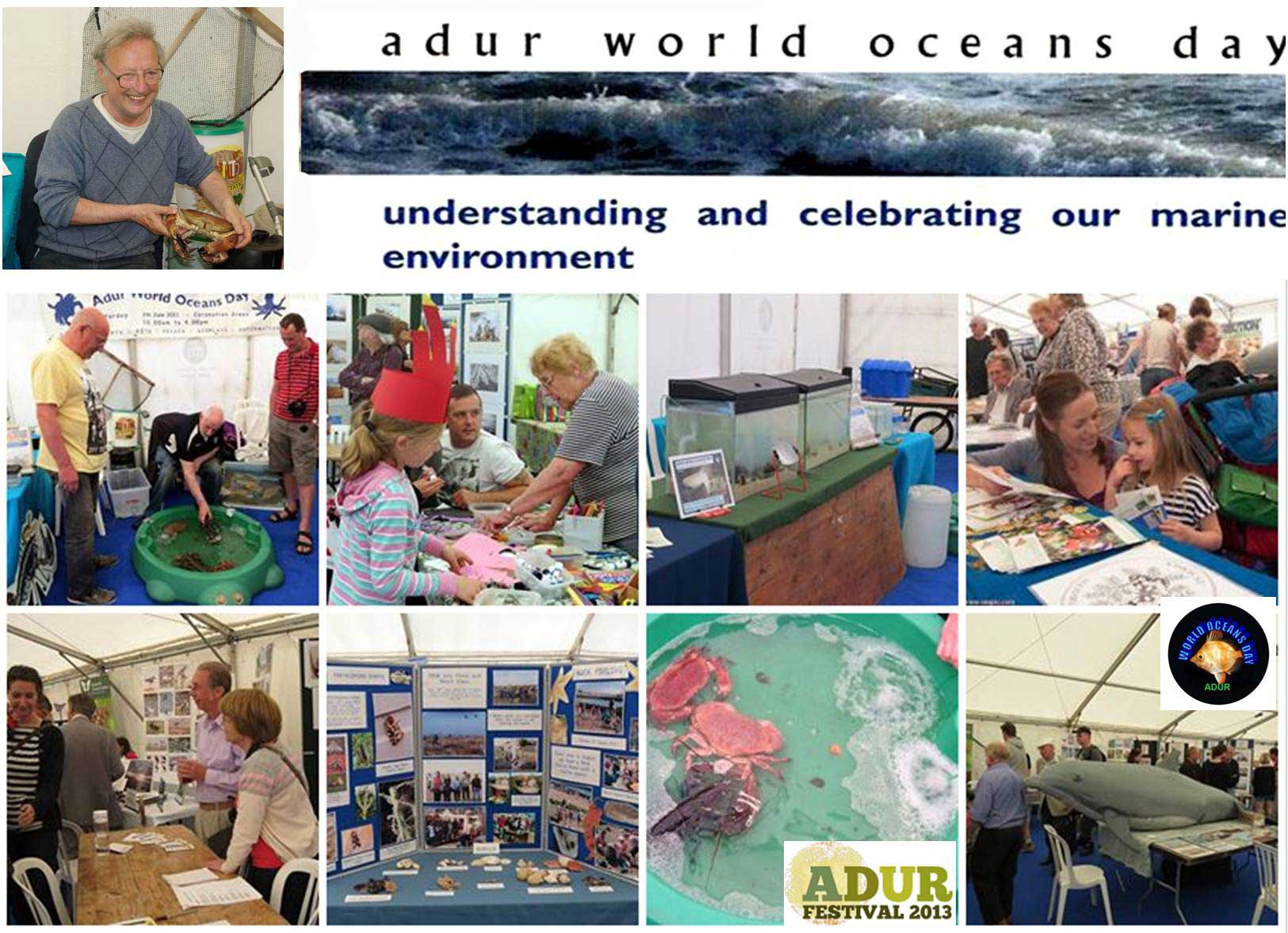
Adur
was one of the UK leaders in presenting the thirteenth environmental exhibition
of World
Oceans Day on Coronation
Green,
Shoreham-by-Sea.
Len
Nevell of the British
Marine Life Study Society presented the usual exhibition of
lobsters
and crabs.
The Friends of Shoreham Beach (FOSB)
took an active role with their display of the wonders of Shoreham
Beach. Wildlife writer Steve
Savage presented the whale
and dolphin exhibition with the life sized replica of a Bottle-nosed
Dolphin. Nikki
Hills on behalf of the Sussex
Wildlife Trust produced an interactive
display on the sea and seashore for the younger age group. David
and Marion Wood produced a presentation about
Widewater
Lagoon (brackish lagoon) LNR. Exhibitors were able to find the time
to answer questions about marine life.
Other
participants included Southwick
Camera Club with an exhibition of seascapes and marine life, and Colin
Knight and Mark Colvin
with a butterfly presentation on the behalf of the Sussex
branch of the Butterfly
Conservation Society.
World
Oceans Day on Facebook
United
Nations: World Oceans Day.
21
May 2013
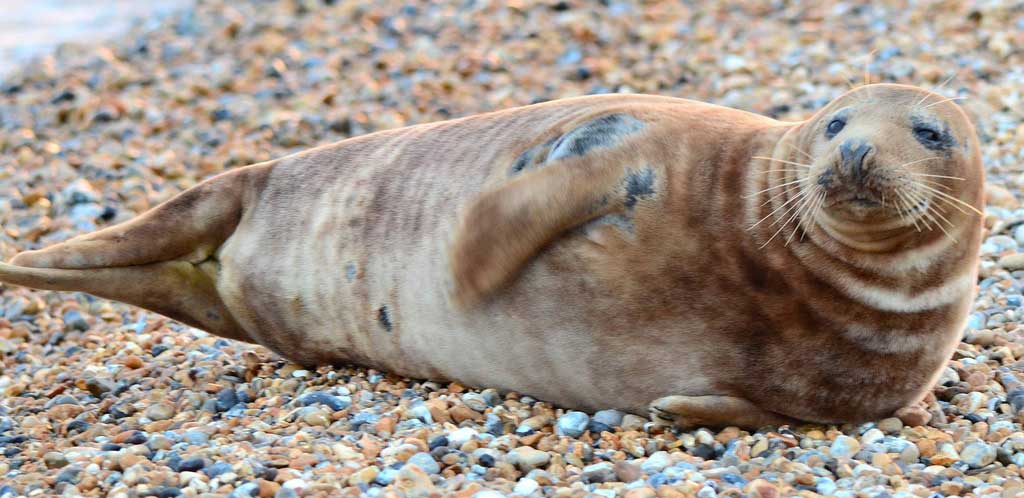
Moulted
Grey Seal at Seaford
Photograph
by Barnacle Bill Simmons
A healthy
Grey
Seal,
Halichoerus
grypus, made a surprise visit to Seaford
Beach, Sussex. Grey Seals are
not residents on the shingle and sand shores of Sussex and it was out of
its normal range.
BMLSS Seals
Full
Report of the two Grey Seals near Seaford
May
2013
Scientists
discovered the earliest evidence of hominid
footprints, Homo
antecessor, outside of Africa,
in sediment, partially covered by beach sand, at low tide
on the foreshore at Happisburgh,
on the Norfolk coast. The footprints are more than 800,000 years old (early
Pleistocene)
and they are direct evidence of the earliest known hominids
in northern Europe.
18
May 2013
A
tunny
was discovered freshly dead on the shore at Babbacombe,
near Torquay, south
Devon. Although
reported as a Yellowfin
Tuna, Thunnus albacares, the
absence of the yellow on the anal finlets and the short first few rays
of the anal fin indicates it is unlikely to be theYellowfin,
more
likely to be a Bluefin Tuna Thunnus
thynnus.
The fish was not measured but I have estimated its length
(excluding fins) to be 1.7 metres.
BMLSS
Tunnies
12,
14 & 28 May
2013
Three
Beaked
Whales (Ziphiidae)
have been washed up dead on the Irish coast, the first one an adult female
Beaked
Whale live stranded and died at Five
Fingers Strand, Malin,
County
Donegal and two days later a juvenile Beaked
Whale, which had also live stranded, was found
at Trawbreaga
Bay, Malin. Both of these are thought to have been the vagrant True's
Beaked Whales, Mesolpodon
mirus, (awaiting confirmation from
DNA test) and were removed to Athlone
for post mortem. A five metre long female stranded at Aillebrack, Ballyconneely,
County
Galway, at the end of the month. All three
whales
might have been stranded as a result of a single incident as this deep
ocean
toothed
whale is rarely seen in British seas and
the only records are from the west coast of Ireland.
BMLSS
Cetaceans
9
May 2013
A
4.5 metre long male Sowerby’s Beaked Whale,
Mesoplodon
bidens, has been reported dead, stranded alive at Clarach
Bay near Aberystwyth
in west Wales. A Cetacean
Strandings Investigation Programme UK (CSIP)
team from Marine Environmental
Monitoring recovered the body and a CSIP team from Zoological
Society of London travelled to the stranding location to conduct a
post-mortem examination.
UK
Strandings (CSIP)
CSIP
Strandings Leaflet
BMLSS
Cetaceans
29
- 30 April 2013
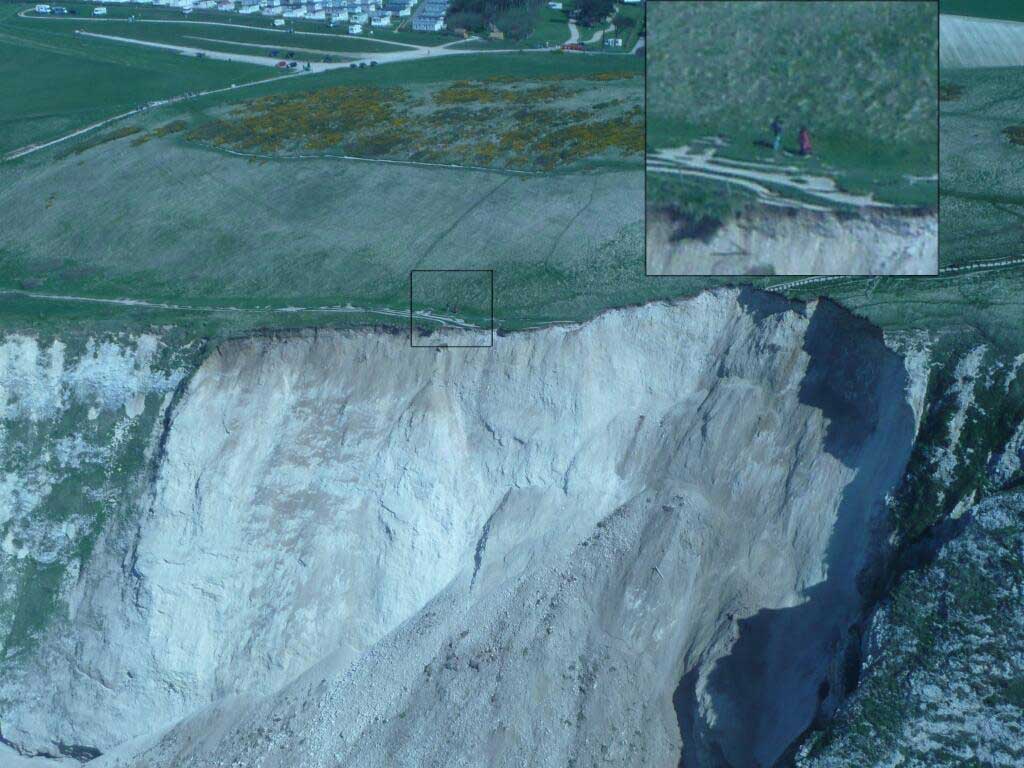
Landslip
at St. Oswald's Bay
Maritime
& Coastguard Agency
Cliff
& Coastal Safety
A
massive
chalk landslide occurred over night on
the seaside chalk cliffs
at
St.
Oswald's
Bay, east of of Durdle
Door, Dorset. The
wet weather had made the chalk
treacherous for walkers on the coastal path,
and about 40 metres of the cliff suddenly gave way and collapsed with hundred
of tonnes of debris deposited in an enormous pile on the beach that reached
half way up the 20 metre high cliff.
Research
carried out by British
Geological Survey has shown 16 cliff falls
between Bridport (Dorset)
and Chichester (West
Sussex) in the first four months of 2013
compared with 22 for the whole of 2012.
Geology
of Dungy Head, St. Oswald's Bay and Man O' War Head near Lulworth Cove
25
April 2013
A
large and unusually large pod of 14 Sperm Whales, Physeter
catodon, were spotted off the Firth
of Forth, heading from the island of Fidra
to the Lamb, just a mile offshore at North
Berwick in East
Lothian. The whales
then changed direction, heading towards Crail
in Fife. The Sperm
Whales were seen by microlight
flyers and also spotted by Scottish Natural
Heritage staff and researchers on the Isle
of May who
were able to identify the whales from their distinctive tail
flukes, dorsal fins and plumes of spray.
24
April 2013
A
Yellowmouth
Drumfish or Shadefish,
Argyrosomus
regius, was discovered in Looe
Fish
Market (south Cornwall) and was caught in a trawl south-west of Eddystone
Lighthouse.
This
southern fish is a rare occurrence in British seas with only three records
since 1998. The
fish was 54 cm long (TL) and weighed 1.35 kg.

Yellowmouth
Drumfish or Shadefish,
Argyrosomus
regius
Photograph
by by Clive Palfrey
The
book name Meagre
or Maigre was
a transcription mistake in an old book and I have discontinued its vernacular
use. This large fish is identified by its
yellow
mouth.
The
Yellowmouth
Drumfish,
also
called the Shade-fish,
may
still be common off the African Mediterranean and Atlantic coasts. Adult
fish can attain a length of 1.9 metres and weights of 48 kg (100 lb).
It is also a fine sporting fish and extremely good eating. Because, it
is reported to inhabit shallow seas, it may have been over-fished off the
European coast centuries ago.
BMLSS
Drumfish
13
April 2013
The
first two Basking Sharks,
Cetorhinus
maximus, of the year (off Cornwall) broke
the surface of the sea between the Lizard
Point and Falmouth,
south Cornwall.
"A
good seven to eight metres in length feeding about 60 cm down, mouth wide
open. We were able to interact carefully with this huge mysterious creature
for about 15 minutes, during which time we were giving some exciting views."
11
April 2013
A
dozen Basking Sharks,
Cetorhinus
maximus, were spotted off Slea
Head, County Kerry,
Ireland by Nick Massett.
Previous
Report 2013
9 April
2013
A
new fish has been added to the British list with the extraordinary discovery
of the deepwater and little known Jellynose
Fish (family: Ateleopodidae)
Ijimaia
loppei caught in the Western Approaches
to the English Channel.
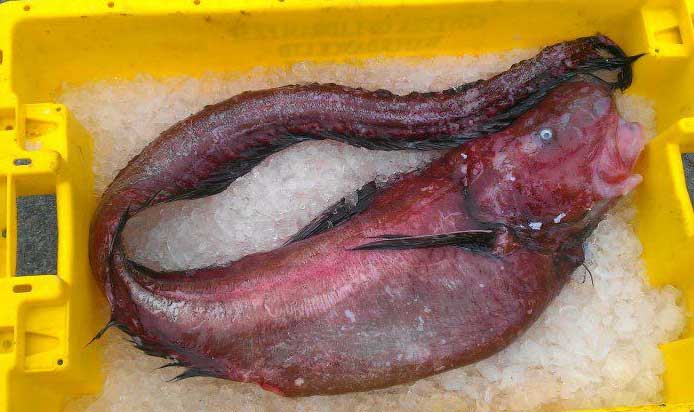
Jellynose
Fish
Photograph
by Andrew Rowe
Jellynoses
are deep-water, bottom-dwelling, marine fish. They are known from the Caribbean
Sea, eastern Atlantic, the western and central Indopacific and the Pacific
coast of Central America. Their skeletons are largely cartilage (hence
"jellynose"), although they are true teleosts
and not at all related to Chondrichthyes.
Jellynoses
(Wikipedia)
6 April
2013
A
wreck of seabirds and crustaceans
and other animals washed up dead on a Yorkshire shore at North
Bay Beach,
Scarborough included one of the more unusual squids
in British seas. It is thought most likely to be the Hard
Squid, Todarodes
sagittatus. . The total length of the
squid was estimated at 60 cm. This is the
first report of this squid on these News Reports.
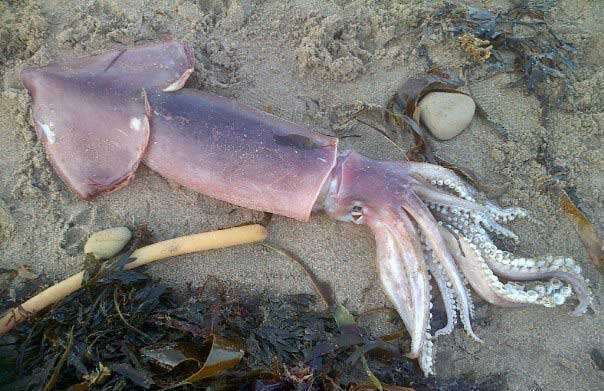
Hard
Squid, Todarodes
sagittatus
Photograph
by Steven Wignill
Over
200 dead Puffins
were found between Filey
and Scarborough,
on the Yorkshire coast, in the wreck as a result of bad weather.
BMLSS
Squids
Information
on the Biology of Squids in UK waters
6
April 2013
The
first inshore Basking Shark,
Cetorhinus
maximus, sighting records of 2013
came from off the Dingle
Peninsula off Ireland. In common with recent years, it was land-based
effort watchers at Slea
Head, County Kerry
(Nick Massett)
and another sighting off the south coast of Ireland off Ram Head, County
Waterford (Andrew Malcolm & Ann Trimble)
that confirmed the annual inshore spring movement.
2
April 2013
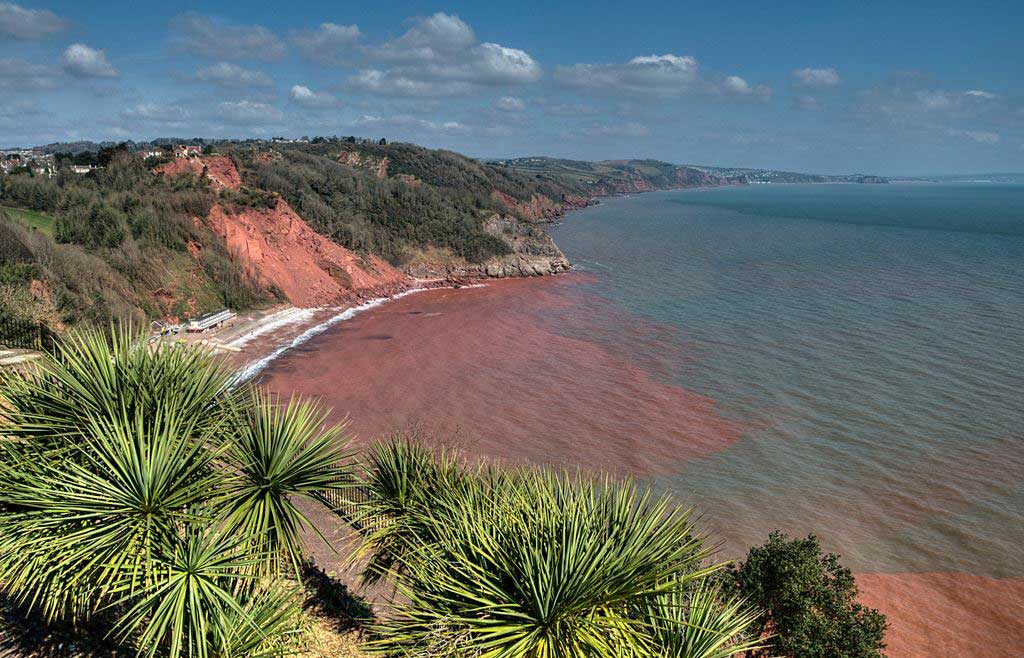
Breccia
Cliffs at Oddicombe
Photograph
by Rosie Spooner
Rosie
Spooner Photography
A further
cliff fall occurred at Oddicombe,
Torbay, with the soft Breccia
cliffs collapsing into the sea and turning
it red.
30
March - 8 April 2013
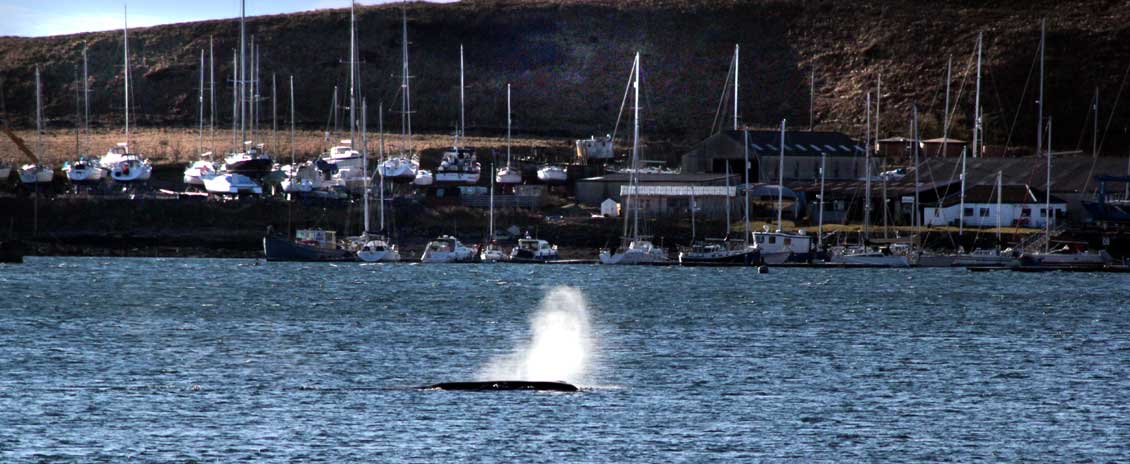
Sperm Whale blowing in
Oban Harbour
Photograph
by Wendy
Clark Photography
on
flickr
 A
10 metre long deep water Sperm Whale, Physeter
catodon, made an unexpected and surprising
visit to the shallow waters of Oban
Bay in south-west Scotland. It has been unable to negotiate its way out
of the horseshoe-shaped bay and has attracted many visitors over a sunny
Easter.
A
10 metre long deep water Sperm Whale, Physeter
catodon, made an unexpected and surprising
visit to the shallow waters of Oban
Bay in south-west Scotland. It has been unable to negotiate its way out
of the horseshoe-shaped bay and has attracted many visitors over a sunny
Easter.
Its
long stay in the harbour does not seem promising for its survival.
Sperm
Whale tail fluke showing
in Oban Harbour
Photograph
by
Mark Hows
on flickr
BMLSS
Cetaceans
23
March 2013 - 3 April - et seq
A
Bearded Seal, Erignathus
barbatus, made an appearance at TBS Salmon farm in Basta
Voe, in Yell
in the Shetland Isles.
This
Arctic seal is a rare visitor to even the most northernmost Scottish islands.
Image

Bearded
Seal
Photograph
by James Simison
Click
on the image for a set of six photographs
BMLSS
Seals
Click
on the photographs for larger images
British
Marine Life News 2011

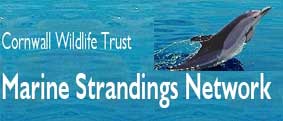
BMLSS
Oil Disasters page


